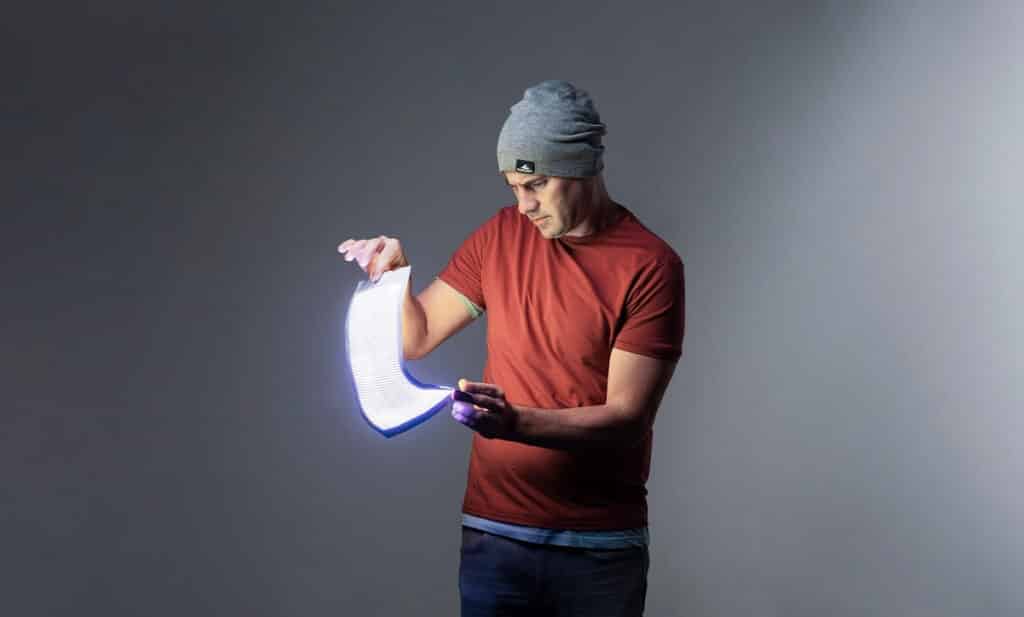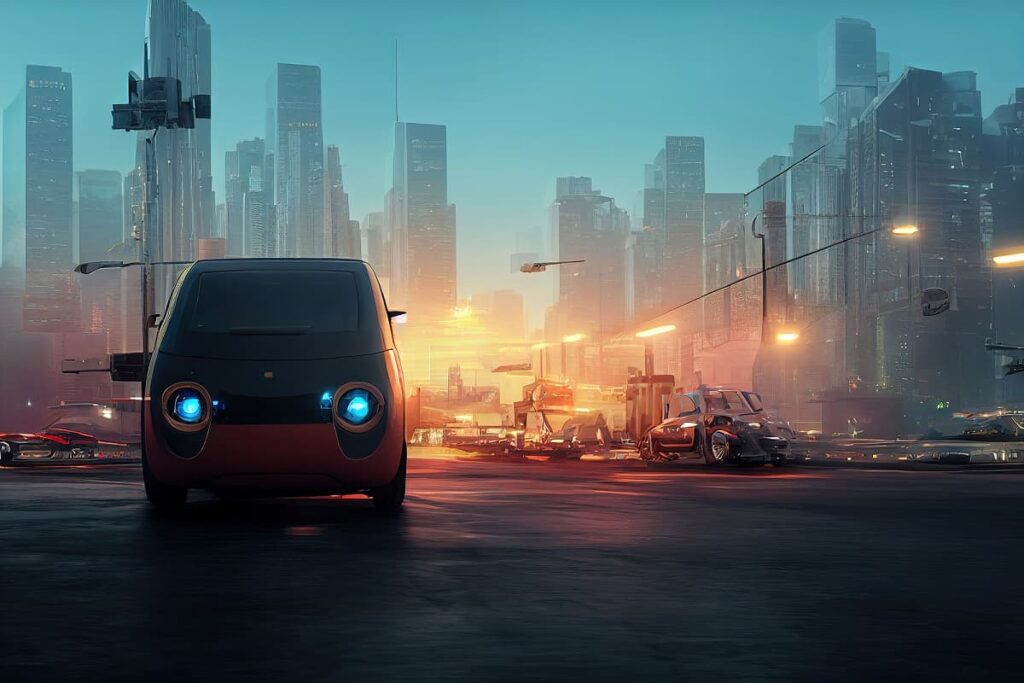Rohinni – A Leader in Mini and Micro LED Technologies
Table of contents

Physicist Richard Feynman once gave a lecture – without notes, like a proper presenter – in which he talked about how there’s plenty of room at the bottom. The year was 1959, and Feynman was proposing that we manipulate matter on an atomic scale, ideas that would eventually become nanotechnology as we know it today. This shouldn’t be confused with the microeconomic concept of “a race to the bottom,” where companies continuously undercut each other on price by sacrificing quality or outsourcing everything to John in Mumbai.
Ideally, we can combine the two concepts. Using the powers of miniaturization, we can do things better and cheaper, undercutting the competition, while offering better performance. That’s precisely what a company called Rohinni is doing for the lighting industry.
About Rohinni
Founded in 2013, Coeur d’Alene, Idaho startup Rohinni came up with a brilliant idea – set up shop in one of the most beautiful towns in the Pacific Northwest, and attract talent by offering them an affordable place to live outside the Silicon Valley Vatican. (Being able to afford rent and not worry about getting shanked on the way to work can do wonders for employee motivation.)

As for raising money this far out in the sticks, that hasn’t been a problem. While Rohinni won’t disclose how much they’ve raised, their technology is attracting all sorts of attention from investors like Tony Faddell, “the father of the iPod.” The Rohinni success story starts with the simple light-emitting diode.
Light-Emitting Diodes
A light-emitting diode (LED) is a semiconductor device that emits light when electric current passes through it. When you’re buying light bulbs, these are the more expensive ones that promise longer life while using less energy. As we begin to miniaturize LEDs, some pretty interesting use cases start to emerge.
Walk into Rohinni’s Coeur d’Alene office and they’ll hand you a business card with a small circle of see-through plastic in the center. If you hold it up to the light, you’ll see something resembling a grain of sand. That’s how small a mini LED is.

If you cut a sand-grain-sized mini LED into ten pieces, one of those pieces is how small a micro LED is. You can’t even see it with the naked eye. When you shrink LEDs down to such a small form factor, you start to realize some incredible performance improvements. Lighting products can be up to 60% thinner, 25% lighter, and cut power consumption by as much as 93%. You also start to run into problems during the manufacturing process.
The Keyboard Opportunity
Rohinni’s co-founders, Cody Peterson and Andy Huska, are serial entrepreneurs whose last venture involved creating the world’s thinnest keyboard. After selling their last company to Synaptics (SYNA), the two men took a few days off and then started playing around with micro LEDs. Given their expertise with keyboards, they wondered what might happen if they replaced traditional keyboard background lighting mechanisms with micro LEDs. Reducing anything that drains a laptop’s battery by 93% is a big deal.
The idea was sound, but a great idea and $3 won’t get you a venti latte at Starbucks these days. What they needed to figure out was how to place these invisible dots onto a substrate with absolute accuracy. To utilize the functionality and performance of mini and micro LEDs, they needed to figure out a way to manufacture them. It’s a problem that some of the world’s biggest companies are still trying to figure out. But, if they could figure out the keyboard problem, they’d be closer to solving a much bigger problem.
The Display Opportunity
According to Digital Trends, “the average 13.3-inch laptop uses between five to eight watts of power all the time, of which two watts are consumed by the average display.” Adopting a display which looks better and uses 50% less energy is a no-brainer. However, if you were to build such a laptop display using micro LEDs, you would need to manually set millions of these invisible specks in perfect order, with nearly zero defects.
This past July, Samsung realized just how tough this is to do, something reported by Tom’s Guide in a piece titled “Samsung faces manufacturing troubles that could delay the first generation of microLED TVs.” While over 100 companies are working on micro LEDs, only Rohinni has figured out a solution that puts them at the front of the pack.
Manufacturing Mini and Micro LEDs
Rohinni’s CEO Matthew Gerber told us how Rohinni’s success story isn’t just because they were able to attract world-class talent, it also involves some serendipity. Recent advances in machine vision and robotics – especially around high-speed motion – enabled the company to create a machine that moves so quickly you can’t even see it. Simply put, they’ve built a device that can transfer these tiny LEDs onto a substrate at a rate of 100 per second, all while correcting defects as it goes along. Multiple devices can operate at once, meaning even higher throughput can be realized. These devices are then encapsulated into a machine that can be used to manufacture mini and micro LEDs. The machines are now being manufactured by Kulicke & Soffa Industries (KLIC) and will be sold to electronics manufacturers. Additionally, they’re also being utilized by the three joint ventures established by Rohinni thus far.
Luumii – Laptop Keyboard Backlights
Given the founders’ experience in keyboards, it’s no surprise that the first joint venture was with KoJa, the world’s leading computer keyboard switch manufacturer. The two companies worked together to create the perfect keyboard backlight which is thinner, smaller, and consumes 93% less power.

In addition to the keyboard backlight, the small LEDs are also being used for accent lights and logo indicators, both of which also consume battery power. In August of 2019, mass production commenced with a 40,000 unit-per-month capacity and plans to more than double that number by the end of the year.
Magna Rohinni Automotive
While the Tesla bulls claim that His Holiness Elon Musk has the whole $7 trillion autonomous vehicle market on lockdown, other auto companies haven’t given up hope yet. A critical part of complete autonomy will be for vehicles to communicate their intent externally using lighting. That’s one of the many use cases being explored by Magna Rohinni Automotive, a joint venture formed in 2018 with Magna International (MGA), a $14.5 billion mobility technology company. The two firms are working together to develop innovative vision-based driver assistance systems that utilize mini and micro LED technologies for the driverless cars of tomorrow.
Display Technologies
Size does matter when it comes to total addressable market (TAM), a term investors use to describe the size of a potential opportunity. Estimates vary as to the size of the display market – from $100 billion to $700 billion – but any number with eleven zeroes after it is the sort of TAM that every venture capitalist wants to throw money at. It’s the latest joint venture announced by Rohinni, and perhaps the most exciting one.
Late last year, Rohinni announced BOE Pixey, a joint venture with BOE Technologies, a $16 billion company out of Beijing that’s one of the world’s largest manufacturers of LCD, OLEDs, and flexible displays. The joint venture integrates Rohinni’s high-speed and high-accuracy mini and micro LED manufacturing process with BOE’s display panel leadership to create ultra-thin high-performance displays. Consumer devices utilizing BOE Pixey mini and micro LED-based displays are expected to become available for purchase in the second half of 2020.
Conclusion
Rohinni’s proprietary robotic process reduces LED manufacturing complexity by placing mini and micro LEDs directly on virtually any substrate at unprecedented speeds, in high volumes, and at greatly reduced cost. And the $127 billion LED industry is just the beginning. There are plenty of other industry verticals requiring the sort of robotics equipment that Rohinni has created. Given the beautiful location they’ve decided to set up shop in, attracting talent to scale their business shouldn’t be very hard.
Sign up to our newsletter to get more of our great research delivered straight to your inbox!
Nanalyze Weekly includes useful insights written by our team of underpaid MBAs, research on new disruptive technology stocks flying under the radar, and summaries of our recent research. Always 100% free.
















